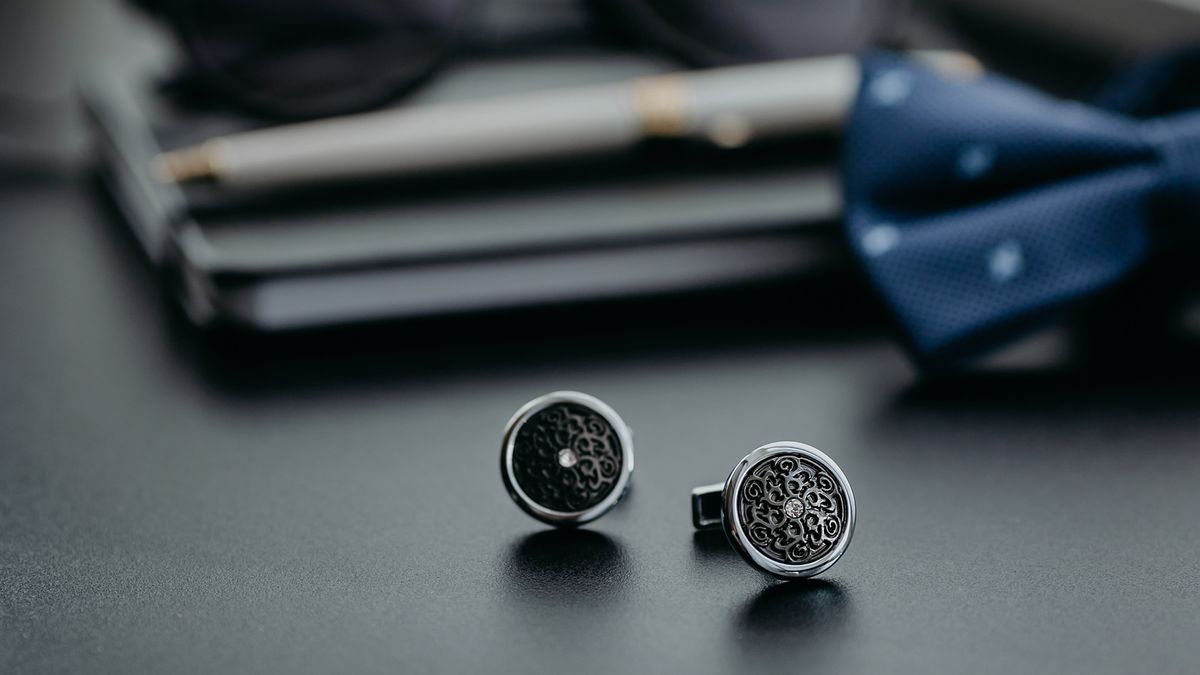Men’s suit accessories are not complicated, but they do require some planning. If you’re only just venturing into the world of tie-pins, cufflinks, and matching socks, we’re here to help you navigate through men’s fashion. We know finding the best cufflinks for the different types of suits for men can be confusing. That’s why our guide will tell you everything from how to wear cufflinks, to the different styles of cufflinks, how to match your cufflinks to your shirt and suit, and also how to coordinate cufflinks with your socks, ties, and other accessories.
Think of cufflinks as small decorative pieces that fasten the cuffs of a shirt or blouse. They are often made of precious metals, such as gold or silver, and may be adorned with gemstones, engravings, or other decorative details. Cufflinks are an important men’s suit accessory because they add a touch of style and sophistication to an outfit. You can use them to dress up a plain shirt or to add a touch of elegance to a formal outfit. Cufflinks are a popular choice for special occasions, such as weddings, proms, and black-tie events. In addition to their aesthetic value, cufflinks can also serve a practical purpose by helping to keep the sleeves of a shirt in place.
Here's our guide that’ll tell you all you need to know about wearing cufflinks:
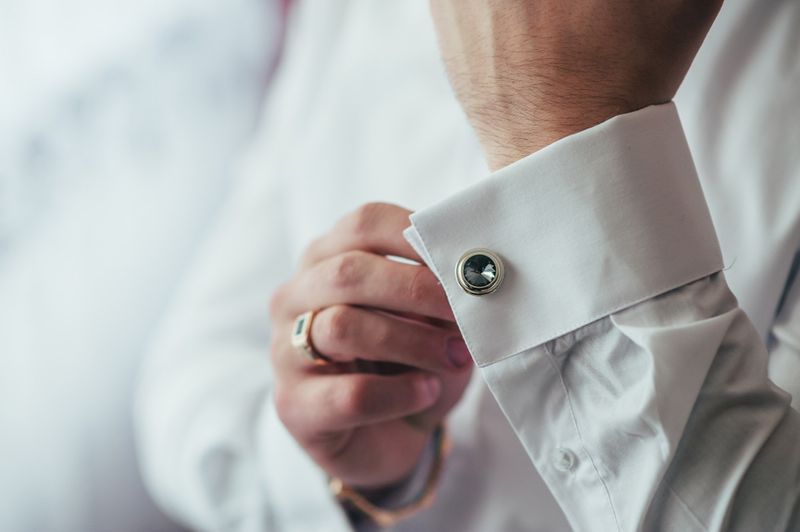
How to wear cufflinks correctly, step-by-step
First, select the appropriate shirt to wear with your cufflinks. Cufflinks are typically worn with formal dress shirts, such as tuxedo shirts or button-up dress shirts.
1. Once you have chosen a shirt, button the shirt all the way up, leaving the top two buttons undone.
2. Take the cuff off your shirt and fold it over twice to create a neat, crisp cuff.
3. Insert the cufflink through the hole in the cuff, making sure the decorative part of the cufflink is facing outward. Repeat the process with the other cuff.
4. Adjust the cuffs to ensure they are neatly and evenly folded over.
5. Finally, button up the top two buttons of your shirt and make any final adjustments to ensure your shirt and cufflinks look crisp and polished.
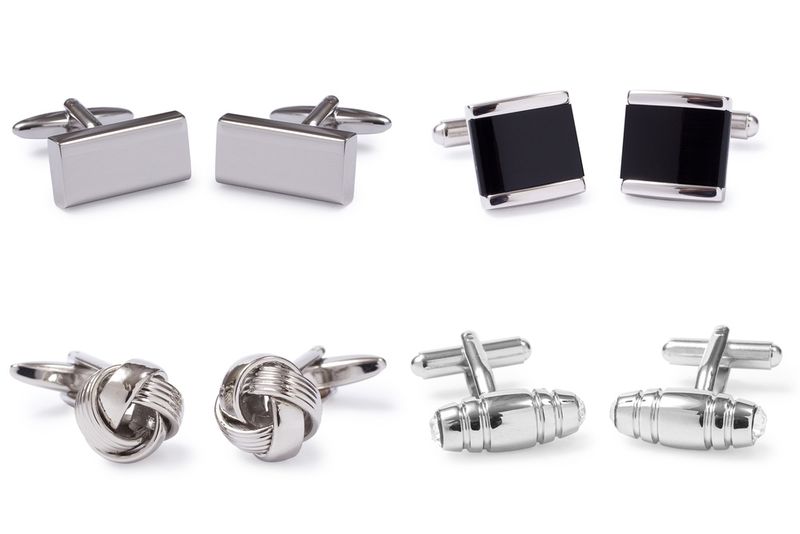
Different styles of cufflinks you can wear
There are several different styles of cufflinks to choose from. While you can pick as per your preference, you also need to keep in mind which suit or shirt you’re going to match it with. Here are the most common styles of cufflinks -
Classic: These cufflinks are simple and elegant, often featuring a round or square shape with a solid colour or minimal design.
Novelty: These cufflinks are more playful and unique, featuring unusual shapes or designs such as animals, sports team logos, or pop culture references.
Art deco: These cufflinks are characterised by bold geometric shapes and intricate designs, often featuring intricate patterns or precious stones.
Enamel: These cufflinks feature a smooth, glossy finish and are often decorated with intricate designs or patterns in bright colours.
Chain link: These cufflinks are made from interlocking metal links, creating a flexible and stylish design.
Tie bar: These cufflinks are designed to be worn with a tie and hold it in place, often featuring a simple, sleek design.
French cuff: These cufflinks are longer and more formal, featuring a hinge mechanism that allows them to be easily fastened and unfastened.
Buttons: These cufflinks feature a button-like design and are often used as an alternative to traditional cufflinks for a more casual look.
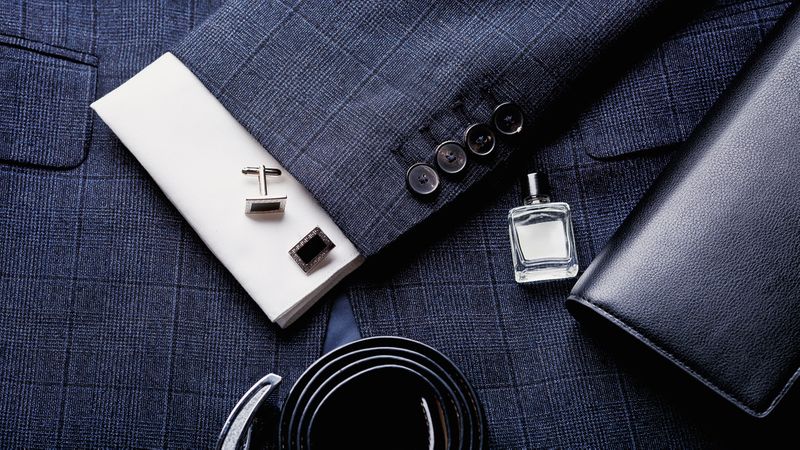
How to choose the right cufflinks for your outfit
Choosing the right cufflinks for your suit or even a simple shirt isn’t too hard. But here are a few things you can keep in mind while figuring out how to wear cufflinks that’ll make your outfit better.
1. Consider the colour and style of your shirt
Choose cufflinks that complement the colour and style of your shirt. If you are wearing a formal shirt, opt for more formal cufflinks such as gold or silver. If you are wearing a casual shirt, choose more casual cufflinks such as wooden or colourful ones.
2. Pay attention to the occasion
If you are attending a formal event such as a wedding or a business meeting, choose more formal cufflinks. If you are wearing a casual shirt for a casual outing, choose more casual cufflinks.
3. Consider the colour of your suit
If you are wearing a suit, choose cufflinks that match the colour of your suit. For example, if you are wearing a black suit, choose black cufflinks.
4. Choose a unique or personal touch
If you want to add a personal touch to your outfit, choose novelty cufflinks that reflect your personal style or interests. For example, if you are a fan of a particular sports team, choose cufflinks with the team's logo.
5. Consider the size of the cufflinks
Choose cufflinks that are proportionate to the size of your wrists. If you have small wrists, choose smaller cufflinks. If you have larger wrists, choose larger cufflinks.
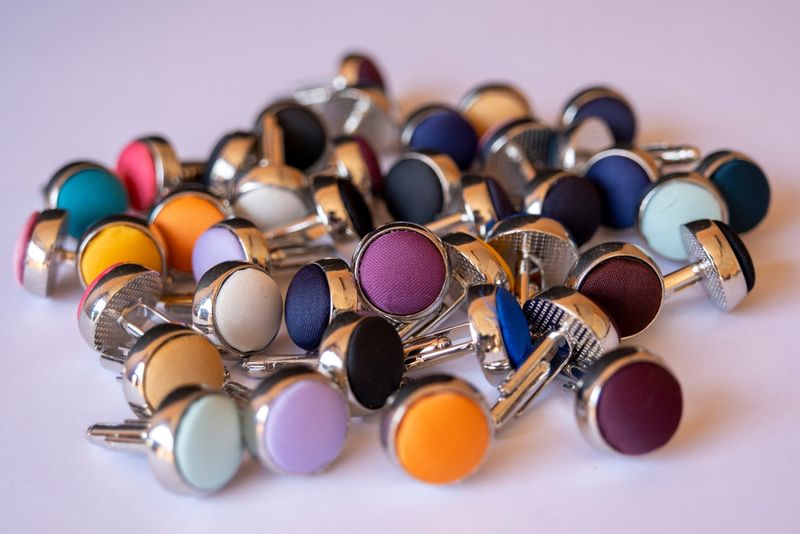
How to choose right-coloured cufflinks
Imagine wearing a pink shirt and pink cufflinks. Spoils the entire outfit, doesn’t it? Cufflinks are an accessory that you want to show off because often they are characterised by your personal style. While you obviously don’t want to wear anything flashy, picking the right-coloured cufflinks can help make or break your outfit. So, here’s what you should keep in mind.
Consider the colour wheel: When matching cufflinks to a shirt, it's helpful to consider the colour wheel. Complementary colours, which are opposite to each other on the wheel, tend to work well together. For example, if you're wearing a blue shirt, try pairing it with orange or yellow cufflinks.
Match the metal: Another thing to consider is the metal of the cufflinks. If your shirt has silver buttons, try wearing silver cufflinks. If your shirt has gold buttons, try wearing gold cufflinks. This helps create a cohesive look.
Go for neutral colours: If you're unsure of what colour cufflinks to wear, it's always safe to go for neutral colours like black, white, or silver. These colours tend to match well with most shirt colours and won't distract from the rest of your outfit.
Consider the occasion: The occasion and dress code of the event can also help guide your decision. For a formal event, it's generally best to stick with classic, neutral colours. For a more casual event, you have more freedom to experiment with bolder or brighter colours.
Don't be afraid to mix and match: Finally, don't be afraid to mix and match colours and patterns. As long as the colours complement each other and the overall look is cohesive, you can get creative with your cufflink choices.
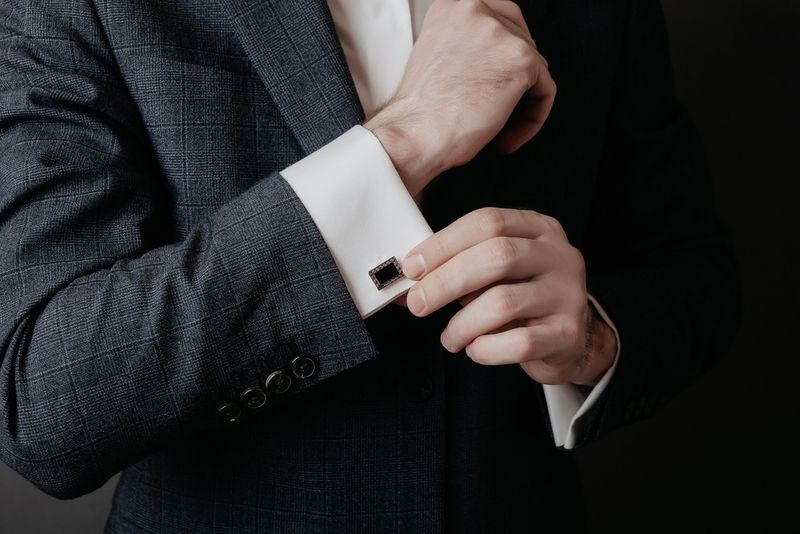
How to match cufflinks with your suit
Your suit is likely the easiest to coordinate your cufflinks with. Simply match the colour of your cufflinks to your suit. But if you’re opting for a cufflink with a different style than just a traditional one, here are some things to keep in mind.
1. Match the metal of the cufflinks to the metal of your watch and other accessories, such as your belt buckle and dress shoes.
2. Choose a colour and design that complements the suit. If you are wearing a solid-coloured suit, you can go with a more bold or colourful cufflink. If you are wearing a patterned suit, you should choose a simpler, more classic cufflink.
3. For formal events, opt for more traditional, classic cufflinks. For less formal events, you can get away with more fun, playful designs.
4. Don't overdo it. Cufflinks should be a subtle accent to your outfit, so avoid pairing them with other loud accessories or patterns.
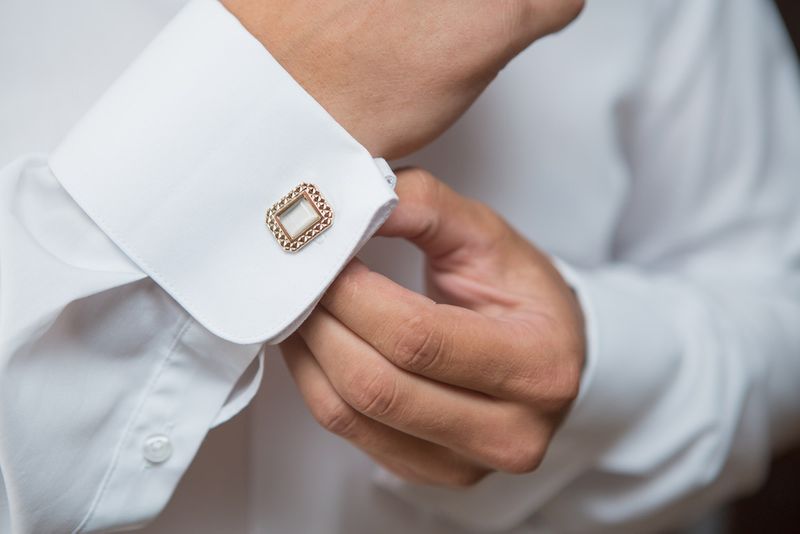
How to match cufflinks with your shirt
Whether you’re wearing a suit or not, matching your cufflinks to your shirt is not a bad choice either. But you definitely don’t to end up wearing an accessory that’s not visible. So, here are some general guidelines you can follow.
1. If you want a more formal look, choose cufflinks that are the same colour as your shirt. This creates a cohesive and polished look.
2. If you want to add a pop of colour, choose cufflinks that are a contrasting colour to your shirt. For example, if you're wearing a white shirt, you could choose red, blue, or green cufflinks to add some visual interest.
3. If you're wearing a patterned shirt, choose solid-coloured cufflinks that coordinate with one of the colours in the pattern.
4. You can also choose cufflinks that have a pattern or design, as long as the design coordinates with the overall colour scheme of your outfit.

How to match cufflinks with your tie
If you’re ditching the suit and going with just a tie, chances are you’re dressed for the office or a semi-formal event. In that case, you need to match your cufflinks with your tie. And, here is something to keep in mind to match your tie and cufflinks.
1. Choose a pair of cufflinks that match the colour or pattern of your tie. If your tie has a solid colour, try finding cufflinks in a complementary colour or with a similar shade. If your tie has a pattern, choose cufflinks that have a similar pattern or colour scheme.
2. Consider the style of your tie and cufflinks. If your tie is formal and elegant, opt for sleek and sophisticated cufflinks. If your tie is more casual and fun, choose cufflinks with a unique or playful design.
3. Pay attention to the metal of your cufflinks. If your tie has silver accents, choose silver cufflinks. If your tie has gold accents, choose gold cufflinks. If your tie has no metal accents, you can choose either silver or gold cufflinks.
4. For formal events, opt for classic and sophisticated cufflinks. For casual events, you can be more playful with your cufflink choices.
5. While coordinating your cufflinks and tie is important, it's also okay to mix and match different styles and colours for a more unique and personal look. Just make sure to keep the overall look cohesive and stylish.
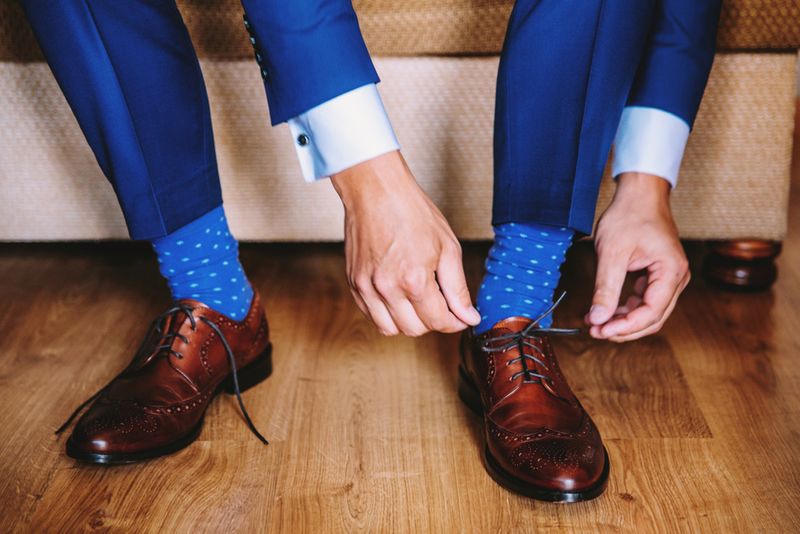
How to match cufflinks with your socks
No suit, no tie, no worries! Match your cufflinks to your socks instead. Here are a few things you can keep in mind when you’re coordinating your cufflinks and socks.
1. Start by choosing a pair of socks that complement the colour and pattern of your shirt and pants. If you are wearing a solid-coloured shirt, consider socks with a bold pattern or colour. If you are wearing a patterned shirt, opt for solid-coloured socks.
2. Next, consider the material of your socks. If you are wearing a formal suit and dress shoes, choose a pair of socks made of a smooth, luxurious fabric such as silk or cashmere. For a more casual look, opt for socks made of a more casual material such as cotton or wool.


